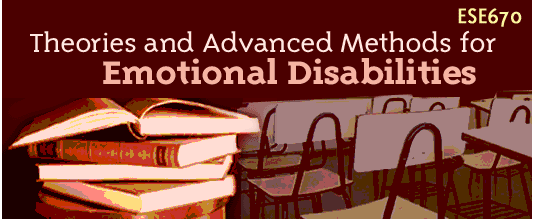
 |
|||||
| |
|
|
|
|
|
Directions: You will develop 50 modifications, in all. The first 25 are for the at-risk population. The second 25 are for youngsters who are more severely involved in emotional or behavioral disorders.
As you develop each one, you will place it in a folder for further use. To let the instructor know you have completed the folder, please send a sample modification and a table of contents listing each of the modifications found in your personal methods and materials notebook.
Here is a sample modification for at-risk.
Conferencing with the Student
1) Begin the conference by establishing rapport and giving the student time to talk about math and attitudes or feelings about personal level of competence. In that period of time it is inappropriate to correct shared feelings -- [think of it like telling a person he or she is wrong about a choice of a favorite color or food].
2) Give the student a forum for sharing current successes - "strut their stuff" time.
3) Ask the student to provide the next challenge - and if the student is uncertain about the next step, offer a problem that dovetails with the current success and a challenging new skill.
4) Allow the student to attempt to solve the new challenge, using personal skills, and make note of the strategies used and the "talking" or verbalization of the issues involved in solving the challenge.
5) Jointly make a goal that moves the student into the new challenge, and offer guidance on strategies to be employed in learning the new skills.
6) Jointly develop an assessment plan.
As possible, allow students to work together in pairs to conference and build new goals, and eventually, provide a weekly time for these strategy sessions to take place. Once a week, briefly review student progress [can be done in about 60 seconds while students are setting goals or working independently.]
|
Place a response box here.